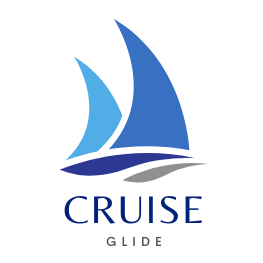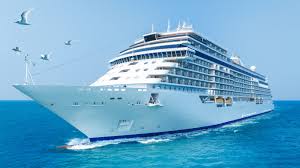Why Cruise Lines Are Investing in Onboard Monitoring Tech
In the world of cruising, safety isn’t just about lifeboats and weather forecasts anymore. As passenger expectations evolve and regulations tighten, cruise lines are investing in advanced onboard monitoring technologies to protect guests, employees, and the ships themselves.
These systems, once limited to basic surveillance, now include everything from environmental sensors and smart badges to AI-driven health protocols. It’s a shift that’s changing how safety and security are managed at sea—and passengers are taking notice.
Safety Meets Innovation
The global cruise market is expected to hit nearly $16 billion by 2028, up from $7.25 billion in 2021, according to Statista. With that growth comes higher stakes. A single incident onboard can create serious ripple effects—both financially and reputationally. That’s why companies are rethinking safety from a tech-forward perspective.
Monitoring technology now plays a central role in everything from passenger wellness to crowd control, helping crew members stay proactive rather than reactive.
Tech Tools Making Waves
Today’s cruise ships are floating smart cities, and the tech supporting them is just as sophisticated. Some of the most widely adopted onboard monitoring systems include:
- Wearable badges: For tracking passenger location in case of emergency.
- Environmental sensors: For detecting smoke, gas, or rapid changes in temperature.
- Water quality and air sensors: To ensure safe conditions in cabins and common areas.
- Digital surveillance: For facial recognition, crowd monitoring, and contact tracing.
- Vape detectors: Devices like those from Triton Sensors are being installed in cabins and restrooms to detect unauthorized vaping—especially critical in fire-sensitive areas.
While some of these tools are visible to guests, others work quietly behind the scenes, continuously collecting data to inform better decision-making on board.
The Vaping Problem at Sea
Vaping has become a growing concern for cruise lines, not just due to passenger safety but because of the potential fire hazards in confined environments. Vapes are often used discreetly in restrooms or cabins—areas where traditional smoke detectors aren’t as effective.
That’s why vape detectors are gaining popularity. They’re small, unobtrusive, and can alert staff in real time, preventing small issues from turning into major safety violations. These devices also help enforce smoking policies without staff needing to constantly patrol.
Health Monitoring in a Post-COVID World
The pandemic forced cruise lines to overhaul health protocols. Today, many ships use AI-powered monitoring to track foot traffic, spot bottlenecks, and optimize crowd flow. Thermal cameras check for fever, while digital wristbands may alert staff if someone hasn’t left their cabin in days.
These systems have become critical not just for illness prevention, but also for streamlining operations and improving the guest experience.
Balancing Safety and Privacy
Cruise lines walk a fine line between effective monitoring and guest privacy. Most companies are now transparent about the technologies they use, with clear signage and opt-in consent where appropriate. Data is typically anonymized and used to improve safety and onboard logistics rather than track individuals.
Guests tend to be more accepting when they understand the value—faster evacuation in emergencies, better air quality, or the assurance that prohibited behavior (like vaping) is being managed discreetly.
Looking Ahead
Technology on cruise ships will only become more advanced. Future developments could include:
- Biometric boarding and check-in processes
- AI-assisted surveillance for behavior analysis
- Environmental controls that adapt in real-time based on occupancy or activity
- Real-time mobile alerts for weather or onboard incidents
Ultimately, the investment in onboard monitoring isn’t just about compliance—it’s about enhancing guest confidence and creating a safer, smoother experience from boarding to disembarkation.
Final Thoughts
From vape detectors to digital health tools, cruise lines are quietly transforming how safety and compliance are handled at sea. These tools may be invisible to the average guest, but they’re making ships smarter, safer, and more responsive.
And in today’s cruise industry, that’s not a luxury—it’s an expectation.







